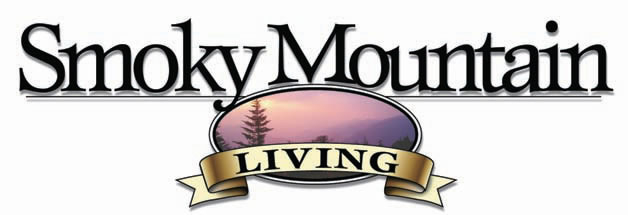Here’s some “heads up” advice for keeping safe while you are in the field:
- Off-trail Vegetation/Terrain Hazards
- Crossing Streams
- Drinking Water
- Heat and Humidity Risks
- Exposure Risks
- Lightning
- Ozone Alerts - Current Conditions
- Stinging Insects
- Spiders
- Chiggers and Ticks
- Venomous Snakes
- Safety in Bear Country - Current Bear Activity
- Poisonous plants
Off-trail Vegetation/Terrain Hazards
- Be aware of hazardous trees, thorny plants, dense thickets, slippery footing, steep slopes, and other unexpected circumstances.
- As soon as a maintained trail is left the probability of such accidents as twisted knees/ankles, skinned elbows, and encounters with poisonous plants or stinging insects increase.
- This is your first recognition of potential threats. Sturdy, over-the-ankle boots are strongly recommended for our field work.
- When descending a steep slope, plan your route for both feet and hands.
- As you descend, check out hand holds in more detail before using them (not fun to ‘shake hands’ with a devil’s walking-stick!).
- On very steep slopes move only one foot or hand at a time to maximize your stability.
- Use the ’10 foot rule’ of space between each volunteer, and avoid following right behind the other since loose rocks and more slippery conditions are likely increased.
- Wet conditions make every log on the ground more slippery – and, in autumn, these can be hidden by freshly fallen leaves.
- So, avoid stepping on logs directly.
- Take smaller strides and carry a walking stick if you’re used to using them (three points are always better than two).
- If you are working in streams, algae covered rocks should be assumed treacherous until proven otherwise.
- Rocks with green moss or attached plants offer better traction.
- The higher the elevation, the steeper the stream gradient, meaning it can rise quicker (and return to lower flow more quickly).
- Always wait out a swollen stream if at all possible.
- This may delay you, but that is better than falling – or worse, being swept away!
- Always be alert for unstable and extremely slippery rocks.
- Don’t cross just above rocky rapids or a cascade, and step on submersed rock with great care.
- Better, look for gravel and sand pockets among the stream boulders – much more stable - and use a walking stick (if not carrying one, find a suitable one nearby) to steady your balance while crossing.
- If you do slip into the water and are being swept downstream, don’t panic.
- Cold water will be a shock for 2-3 seconds, but maneuver your feet pointing downstream to negotiate rocks, and make your way to the bank (no shower needed tonight!).
- Because of the likely presence of disease-causing micro-organisms, always boil, filter, or treat your drinking water.
- Don’t drink directly from streams!
- When the body is unable to cool itself by sweating, several heat-induced illnesses such as heat stress or heat exhaustion and the more severe heat stroke can occur, and can result in death.
- Factors Leading to Heat Stress
- High temperature and humidity; direct sun or heat;
limited air movement; physical exertion; poor physical
condition; some medicines; and inadequate tolerance
for heat.
- High temperature and humidity; direct sun or heat;
- Symptoms of Heat Exhaustion
- Headaches, dizziness, lightheadedness or fainting.
- Weakness and moist skin.
- Mood changes such as irritability or confusion.
- Upset stomach or vomiting.
- Symptoms of Heat Stroke
- Dry, hot skin with no sweating.
- Mental confusion or losing consciousness.
- Seizures or convulsions.
- Preventing Heat Stress
- Know signs/symptoms of heat-related illnesses;
monitor yourself and others. - Avoid direct sun; rest regularly.
- Drink lots of water; about 1 cup every 15 minutes.
- Wear lightweight, light colored, loose-fitting clothes.
- Avoid alcohol, caffeinated drinks, or heavy meals.
- Know signs/symptoms of heat-related illnesses;
- What to Do for Heat-Related Illness
- Call 911 (or local emergency number) at once.
- While waiting for help to arrive:
- Move the victim to a cool, shaded area.
- Loosen clothing.
- Provide cool drinking water.
- Fan and mist the person with water.
- Most exposure risk is associated with changing temperatures and precipitation, or high winds related to storms.
- Exposure can also occur during very cold nights in the backcountry, or exertion in hot, humid weather.
- No matter what the season or the apparently ‘nice day’, always carry rain gear, even if it’s just a light poncho.
- During cold conditions take some high calorie foods to snack on to replace energy lost when you are cold.
- Extra dry socks, a towel, warm hat , and gloves should be a given. In hot weather, guard against heat exhaustion, especially during humid conditions.
- Take plenty of breaks during the hottest part of the day, and drink water before you think you need it (too late then!).
- Wear light, loose-fitting clothing.
- Wind gust graph by Jim Renfro.
- Poncho photo by Charles Wilder.
- If caught in a lightning storm, seek shelter by moving off any ridges or high points quickly.
- Most lightning strikes are on the upper half of mountain slopes.
- It may be hard to follow “conventional wisdom” to stay away from trees, but at least stay away from tall trees.
- Take shelter between smaller trees.
- Take off any metal frame packs, stash metal walking sticks, and remove zippered jackets.
- Many people are injured by the ground charge that radiates across the ground from the strike point.
- Do not stand on large roots from a nearby tree.
- Fold a sleeping bag, jacket, or other insulating material under your feet; keep your boots together and touching, and crouch down.
- At high concentrations ingested ozone can reduce lung volume and injure lung tissue. Avoid hiking or working strenuously on elevated, exposed ridges where the highest ozone concentrations occur.
- Ozone alerts usually occur when hot, stagnant air masses “sit” on us. For current particle pollution, ozone pollution, visibility, and weather conditions, you can access the Park's real-time air quality web site from Look Rock.
- This is probably the greatest summertime threat to anyone in the backcountry.
- The offending insects are NOT bees, but predatory and scavenging wasps and hornets that live in colonial nests, each individual capable of stinging you several times
- All species have wide swings of abundance from year to year, so be aware of current probabilities.
- The months of June, July, and August have the highest frequency of insect stings here.
- Your best protection is to keep up sharp, alert visual scanning of the area you are about to enter.
- Be especially watchful for nests on the trail’s uphill cut-bank side.
- Bears often dig these out, which only increases the ‘ill-humor’ of those which remain!
- These “dug” insects will attack without further disturbance from you, sensing your approach through ground vibrations of your pace.
- Similarly, watch for aerial nests along woods edges, on overhanging limbs near streams, or in sun-lit clearings.
- Almost all of the Park’s 500+ species use venom, but only two are dangerous: the black widow, and the brown recluse.
- The recluse is an exotic here, and appears to only inhabit various buildings in the Park.
- They are yellowish-brown with a characteristic darker brown mark on the back which resembles a violin.
- They should not be encountered in the backcountry.
- The black widow is native and found in dry, usually pine forests at low elevations.
- In the warm season, watch for an irregular mesh of webbing close to the ground in sheltered sites, like the sides of logs or trees, under banks or rocks, and inside buildings.
- There may be more than one species here, so the underside “hourglass” markings can be variable in pattern, and either red or orange-ish.
- Both are more prevalent in drier areas at the lower elevations in the Park, precautionary measures that may be taken to avoid their bites.
- Because these creatures typically inhabit the drier areas, just be aware when in these sites.
- Check your body for ticks throughout the day.
- Use insect repellents repellents, such as "DEET" and be sure to also roll up the bottoms of pant legs and any long sleeves and spray the inside areas to keep them from avoiding skin repellent by going under your clothes.
- If you ar exposed to chigger-infested areas, take a hot bath to kill and remove chigger larvae.
- Then apply an antiseptic solution to any welts that have appeared to kill trapped chiggers and to prevent infection.
- Normally, two to three days pass before the itching stops.
- In areas likely to harbor ticks, wear light-colored clothing so that crawling ticks can easily be seen and tuck pant legs into boots or socks so ticks do not have access to skin.
- Use insect repellents repellents, such as "DEET".
- To reduce the risk of disease transmission, inspect yourself for ticks frequently and properly remove any attached ticks promptly.
- Use fine-tipped tweezers to grasp the tick at the skin surface.
- If tweezers are not available, use a tissue or paper towel to protect your fingers from possible exposure to the tick's body fluids.
- With a steady motion, gently pull the tick straight out.
- Do not twist, jerk or crush the tick's body. After removal, clean site and hands with soap and water.
- There are only two species of our 24 snakes that are potentially dangerous: the copperhead and the timber rattlesnake.
- The timber rattlesnake isn’t as common as the copperhead.
- It is likely to be found at most Park locations, except the north-facing slopes at higher elevations.
- Any habitat that has numerous sunny outcrops should be treated as having a higher probability for occurrence of rattlesnakes.
- Copperheads are common, mostly at lower elevations.
- They can likely be found at every old homesite of any size as well as other low elevation sites –moist or dry.
- Both species typically sun themselves in the open during cooler temperatures (hence are more often seen on maintain, warmer trail paths then), and then seek shelter under shrubs, in rock crevices, and/or shaded stream banks during hotter portions of the day.
- They are most active at night, hunting for prey at this time.
- Just watch where you step or place your hands, and be especially careful around old homesites, outcrops, and any area likely to have higher rodent populations.
- When stepping over fallen logs, make sure a snake isn’t using the other side to direct rodents its way where it can strike them!
- Since snakes are communal, don’t just step backwards automatically when you encounter one.
- Look first!
- Remember, they hunt at night and get cool as the temperature drops.
- Therefore, they need to warm themselves in the morning especially, so any sunny clearing is suspect, including mountaintop grassy balds for rattlesnakes.
Bears in the park are wild and their behavior is sometimes unpredictable. Although extremely rare, attacks on humans have occurred, inflicting serious injuries and death. Treat bear encounters with extreme caution and follow these guidelines:
- If you see a bear remain watchful. Do not approach it. If your presence causes the bear to change its behavior (stops feeding, changes its travel direction, watches you, etc.)—you’re too close. Being too close may promote aggressive behavior from the bear such as running toward you, making loud noises, or swatting the ground. The bear is demanding more space. Don’t run, but slowly back away, watching the bear. Try to increase the distance between you and the bear. The bear will probably do the same.
- If a bear persistently follows or approaches you, without vocalizing, or paw swatting, try changing your direction. If the bear continues to follow you, stand your ground. If the bear gets closer, talk loudly or shout at it. Act aggressively and try to intimidate the bear. Act together as a group if you have companions. Make yourselves look as large as possible (for example, move to higher ground). Throw non-food objects such as rocks at the bear. Use a deterrent such as a stout stick. Don’t run and don't turn away from the bear. Don't leave food for the bear; this encourages further problems.
- Most injuries from black bear attacks are minor and result from a bear attempting to get at people's food. If the bear's behavior indicates that it is after your food and you're physically attacked, separate yourself from the food and slowly back away.
- If the bear shows no interest in your food and you're physically attacked, fight back aggressively with any available object--the bear may consider you as prey! Help protect others, report all bear incidents to a park ranger immediately. Above all, keep your distance from bears!
- While Poison sumac has been found in the Park, it is very uncommon and restricted to the higher, boggy areas (a very rare habitat here).
- Poison-ivy, however, is common especially in low elevation areas that have been disturbed, like hiking trails, old homesites, alluvial areas, old roads, and in second-growth forests.
- It is not usually found in old growth forests or at higher elevations of the Park.
- It can be ground cover, or as vines growing up trees and buildings.
- It is sometimes confused with Virginia Creeper, but Poison-ivy has three leaves, while Virginia Creeper has five leaves.
- The hair on the poison-ivy vine is usually finer and black in color (it can be reddish or even gray, too).
- Virginia Creeper, while often growing up trees, has much coarser hairs, typically brownish in color.
- The hair on the poison-ivy vine is usually finer and black in color (it can be reddish or even gray, too).
- If there is a choice avoid and/or reduce off-trail hiking or work in suspected poison ivy areas.
- If this is not possible, take extra time to navigate through it, touching leaves as little as possible (here’s another place where a hiking staff comes in handy).
- If exposed immerse the affected area as soon as possible in stream water for 10-15 minutes.
- Evidence indicates that cold water is better than warm water for removing leaf oils from your skin.
ENJOY YOUR TIME IN THE SMOKIES -- JUST BE AWARE OF YOUR SURROUNDINGS!
REFERENCES
Backcountry Safety Guide. Keith Langdon and Heather MacCulloch. 2004. Inventory and Monitoring Branch, Great Smoky Mountains National Park.
Heat Index. http://www.crh.noaa.gov/pub/heat.php. NOAA's National Weather Service Weather Forecast Office.
OSHA Quick Card. http://www.osha.gov/Publications/osha3154.html. Occupational Safety & Health Administration. U.S. Department of Labor.

























